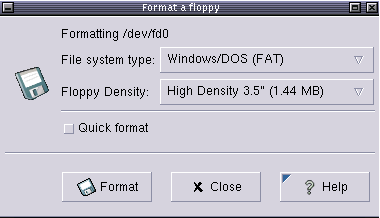

- DISK FORMATTING LINUX HOW TO
- DISK FORMATTING LINUX FULL
- DISK FORMATTING LINUX WINDOWS 8.1
- DISK FORMATTING LINUX ISO
- DISK FORMATTING LINUX FREE
try the command "wipe filename" (cf more detail man wipe or wipe -h).Many graphical tools are available to format disks and partitions in Linux. Some of the popular supported filesystem types are ext4, Btrfs, and exFAT. Linux by default supports several filesystems, which would come with their pros and cons. Filling the third partition with random data : dd if=/dev/urandom of=/dev/sdX3 bs=1M #replace X with the target drive letter. Disks and partitions need to be formatted before being mounted and used.Filling the second partition on the /dev/sda disk with all zeros : dd if=/dev/zero of=/dev/sdX2 bs=1M #replace X with the target drive letter.If /dev/sda is the whole disk, then (on Linux, because the naming scheme vary from one Linux to another) /dev/sda3 is the third partition on the disk. You can wipe a partition using the same method than for the whole disk. If you messed up your master boot record (MBR) you can wipe it using this command :ĭd if=/dev/zero of=/dev/hdX bs=446 count=1 #replace X with the target drive letter. If you replace the device name, you can also wipe USB sticks and other peripherals. Use for example gparted to find the correct drive. sda is usually the first hard drive, the second drive would be sdb and so on. For general users, using a GUI tool may be more comfortable. Important Note: You need to replace sdX with the device name you want to overwrite. There are two primary ways of formatting a drive in Linux: using the CLI and using the GUI. The reason one should fill with urandom in case of required security is explained here: If you are wiping your hard drive for security, you should populate it with random data rather than zeros (This is going to take even longer than the first example.) : dd if=/dev/urandom of=/dev/sdX bs=1M #replace X with the target drive letter.Filling the disk with all zeros (This may take a while, as it is making every bit of data 0) : dd if=/dev/zero of=/dev/sdX bs=1M #replace X with the target drive letter.

DISK FORMATTING LINUX WINDOWS 8.1
On Windows 10, Windows 8.1 and Windows 7 search for command and simply right-click Command Prompt shortcut from the search results and select Run as administrator. Step 1: Run Administrator Command Prompt.

DISK FORMATTING LINUX FULL
Outputs: Desktop]# mkfs.This will overwrite all partitions, master boot records, and data. Format Linux USB Drive to recover full disk space in Windows 10. issue the following command: mkfs.xfs /dev/sdb1
DISK FORMATTING LINUX HOW TO
so I will show you how to format filesystem as XFS on a new partition. Selecting a disk for formatting at this point is nondestructive, so even if you make a mistake you can always exit the format program without damaging data. While you installed centos 7 or RHEL 7 Os on your machine, it will format partition as a new “XFS” filesystem by default. For example, Linux refers to hard disks using a simple BSD-style scheme: /dev/hdn are the IDE hard disks on a system, and /dev/sdn are the SCSI hard disks on a system. Desktop]# cat /proc/partitionsĢ53 1 43958272 dm-1 CentOS 7/RHEL7 Format Filesystem For A partition

Now a new parition will be added in partition table, you can use “ cat /proc/partition” command to check, there is a new line “sdb1”. Partition 1 of type Linux and of size 8 GiB is setĬalling ioctl() to re-read partition table. N add a new partition #=> press "n" key to add a new partition Outputs: Desktop]# fdisk /dev/sdbĬhanges will remain in memory only, until you decide to write them.īe careful before using the write command.ĭevice does not contain a recognized partition tableīuilding a new DOS disklabel with disk identifier 0xc484f67f.Ĭommand (m for help): m #=>print help message To add a new partition on newly added hardware disk “ /dev/sdb“, you need to use “ fdisk” command with “hardware disk name”, type: fdisk /dev/sdb rootdeveci fdisk /dev/sdb Device contains neither a valid DOS partition table, nor Sun, SGI or OSF disklabel Building a new DOS disklabel with disk identifier. You can partition /dev/sdb disk with fdisk tool like below. You can format and mount any disk which is attached a new disk to the server.
DISK FORMATTING LINUX ISO
You can copy several ISO files at a time. Oracle Linux disk format and mount Steps. Now there’s no need to format the disk again and again or to extract anything- with Ventoy simply copy the ISO file to the USB drive and boot it. Ventoy Ventoy is an open source tool that lets you create a bootable USB drive for ISO files.
DISK FORMATTING LINUX FREE
Desktop]# ls /dev/sd*įorm above outputs, you can see that there is a new disk “ sdb” added just now. linux disk format partition free download. To find the new added hardward disk on you system so that you can create a new partition on the new hardware disk, type: cat /proc/partition CentOS 7/RHEL 7 Find the New Added Hardward Disk


 0 kommentar(er)
0 kommentar(er)
